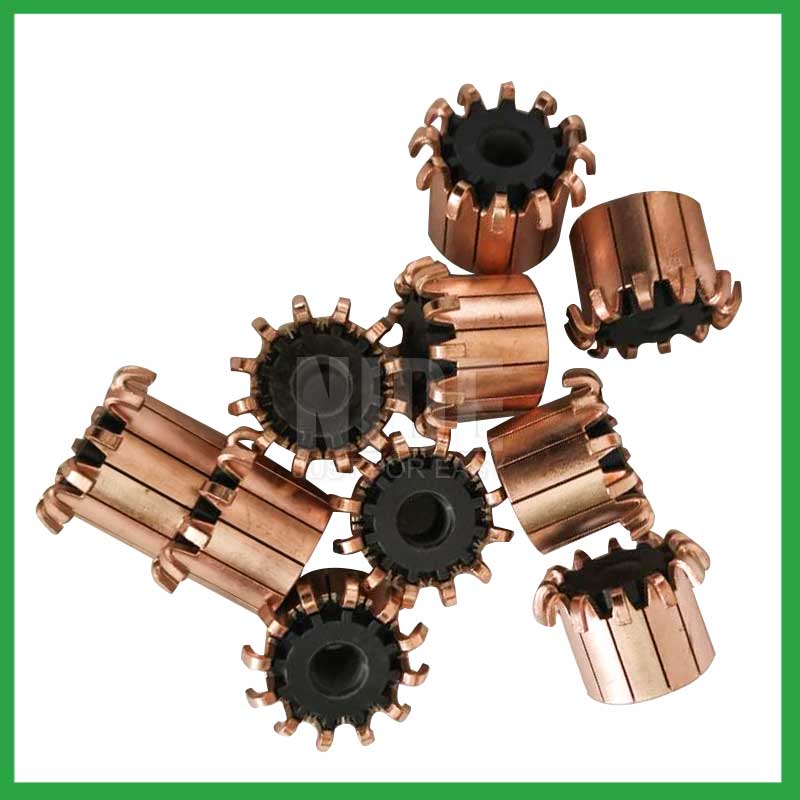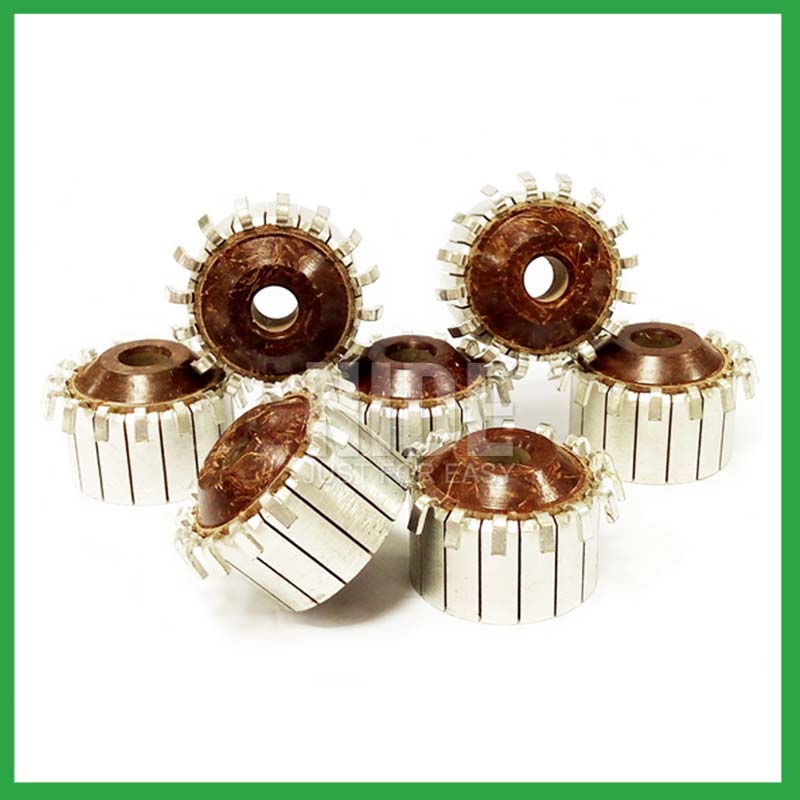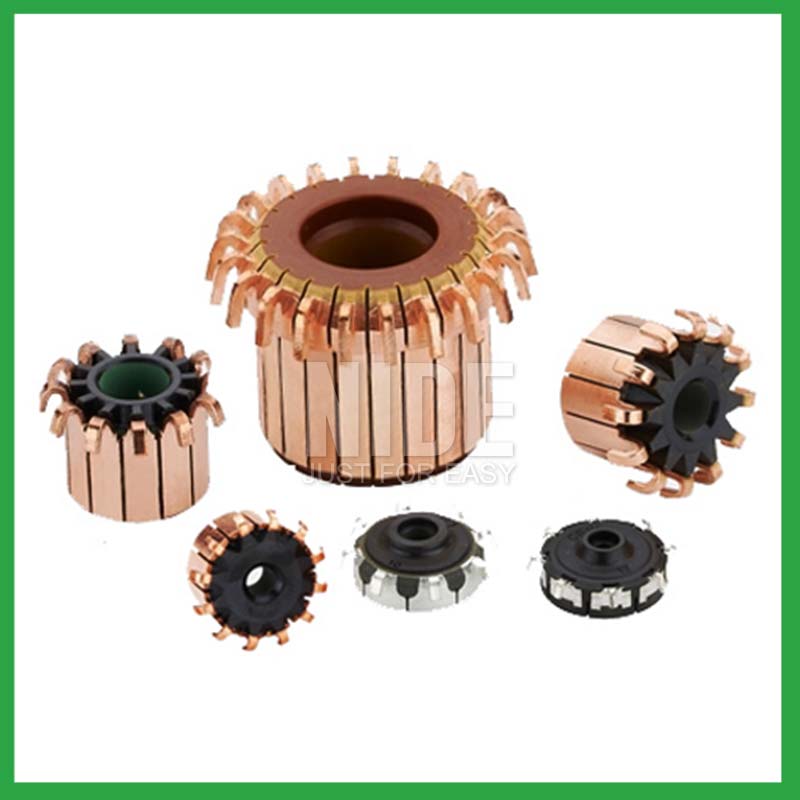2024-09-02
The efficiency and reliability of electric motors are critical in a wide range of applications, from household appliances and automotive systems to industrial machinery and power tools. One of the key components within many types of electric motors is the commutator, a cylindrical switch that plays a vital role in the operation of the motor. Over time, however, the commutator can wear down, raising concerns about its impact on motor efficiency. In this article, we will explore the relationship between commutator wear and motor efficiency, and how Nide International, a leader in motor manufacturing and technology, addresses these challenges to ensure optimal motor performance.
The commutator is a rotating electrical switch in certain types of motors, such as brushed DC motors. It reverses the direction of current flow through the motor windings as the motor rotates, enabling continuous rotation and torque production. The commutator consists of a series of copper segments arranged around the motor shaft, with brushes made of carbon or graphite pressing against these segments to conduct electricity.
Key Functions of the Commutator:

Commutator wear is a natural part of motor operation, especially in brushed motors. Several factors contribute to the wear of the commutator:
1. Friction:
The constant rubbing of brushes against the commutator segments generates friction, which gradually wears down both the brushes and the commutator surface. This wear is accelerated in high-speed or high-load applications.
2. Electrical Arcing:
During operation, especially when the motor is under load or during rapid start-stop cycles, electrical arcing can occur between the brushes and commutator segments. This arcing can cause localized heating, pitting, and erosion of the commutator surface.
3. Contamination:
Dust, debris, and other contaminants can accumulate on the commutator surface or between the commutator segments, leading to uneven wear and increased resistance at the contact points.
4. Misalignment:
Misalignment of the brushes or uneven pressure against the commutator can lead to uneven wear patterns, which can cause the motor to operate less efficiently over time.
As the commutator wears, several issues can arise that directly impact the efficiency of the motor:
1. Increased Electrical Resistance:
Worn commutator segments can lead to poor electrical contact between the brushes and the commutator. This increases the electrical resistance in the circuit, causing the motor to draw more current to produce the same amount of torque, thus reducing overall efficiency.
2. Reduced Torque and Power Output:
As the commutator wears, the ability of the motor to generate consistent torque and power diminishes. This is particularly problematic in applications that require precise control or sustained power output, as the motor may struggle to maintain performance.
3. Increased Heat Generation:
Poor electrical contact and increased resistance can cause the motor to generate more heat during operation. Excessive heat not only reduces efficiency but also accelerates wear on other motor components, potentially leading to premature failure.
4. Sparking and Electrical Noise:
Worn commutators are more prone to sparking, which not only contributes to further wear but also generates electrical noise that can interfere with other electronic systems. In sensitive applications, this can lead to operational issues and reduced reliability.

To mitigate the effects of commutator wear and ensure long-lasting motor efficiency, Nide International employs several strategies:
1. High-Quality Materials:
Nide International uses advanced materials for both commutators and brushes to reduce friction and wear. Copper alloys with high conductivity and wear resistance are commonly used for commutator segments, while specialized carbon or graphite composites are used for brushes.
2. Precision Manufacturing:
Nide International employs precision manufacturing techniques to ensure that commutators and brushes are perfectly aligned and balanced. This minimizes uneven wear and ensures consistent electrical contact throughout the life of the motor.
3. Regular Maintenance:
While commutator wear is inevitable, regular maintenance can extend the life of the motor and maintain efficiency. Nide International provides guidelines for inspecting and servicing commutators, including brush replacement and commutator resurfacing when necessary.
4. Design Innovations:
Nide International is continuously innovating in motor design to reduce the reliance on commutators in certain applications. For instance, the company offers brushless DC motors, which eliminate the need for a commutator altogether, thereby enhancing reliability and efficiency in specific applications.

Commutator wear is a critical factor that can affect the efficiency and performance of electric motors. As wear progresses, issues such as increased resistance, reduced power output, and excessive heat generation can lead to significant drops in efficiency and even motor failure. However, by understanding the causes and effects of commutator wear, and by implementing best practices in material selection, manufacturing, and maintenance, these challenges can be effectively managed.
Nide International, with its commitment to quality and innovation, offers solutions that address the complexities of commutator wear. Through the use of advanced materials, precision engineering, and regular maintenance, Nide International ensures that its motors continue to operate at peak efficiency, delivering reliable performance across a wide range of applications. Whether in household appliances, automotive systems, or industrial machinery, Nide International’s motors are designed to stand the test of time, even in the face of commutator wear.
Recommended Products: Plane Mixer motor Commutator , 14 segments Power Tool Electric Motor Commutator